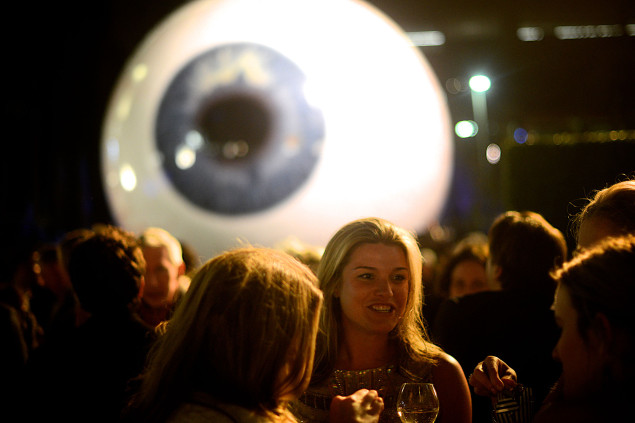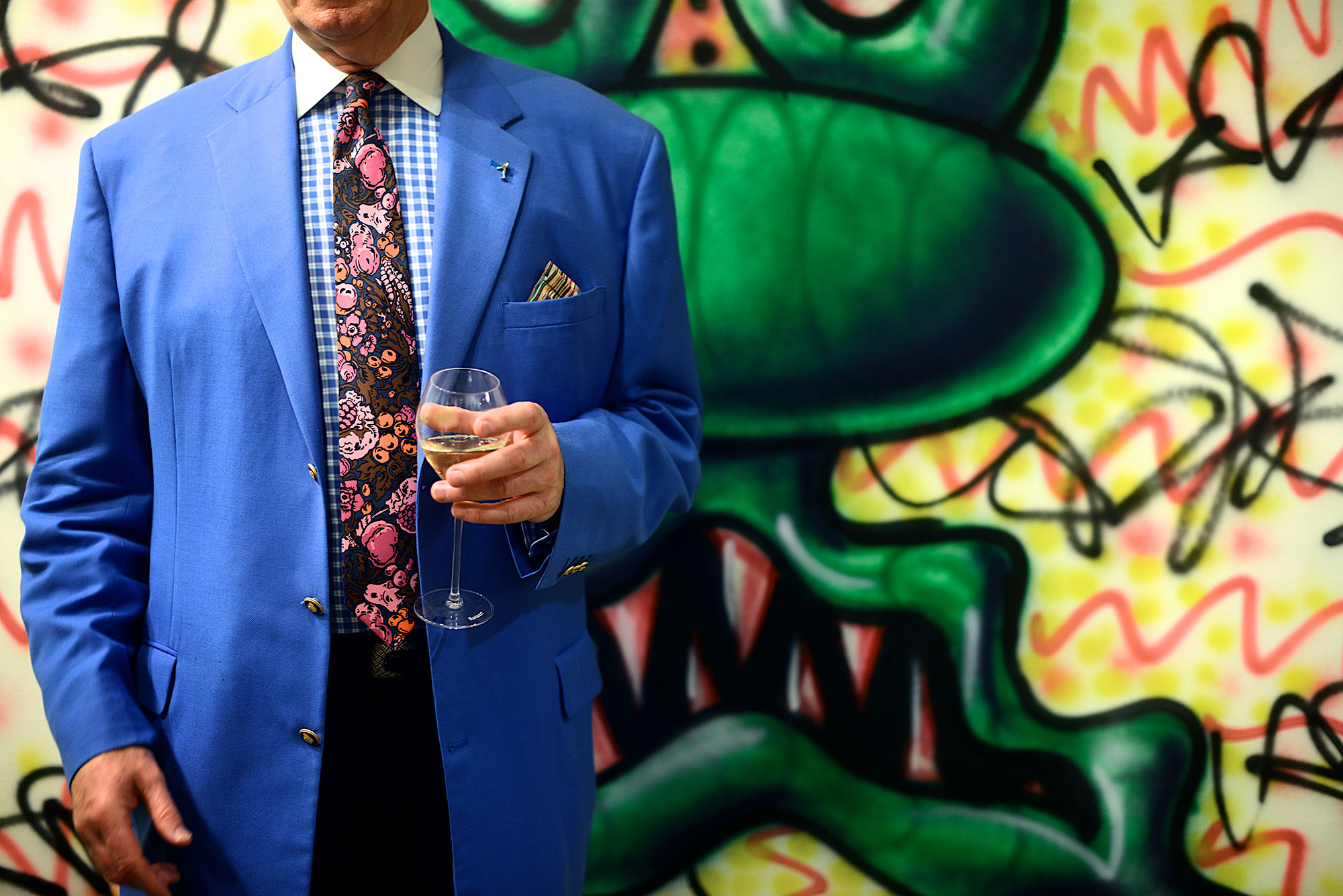April has become the epicenter of Dallas’ arts and culture calendar. You can blame the good weather, as well as multiple arts organizations trying to build on each other’s successes. Things really started to coalesce in the month of April after the Dallas Art Fair launched, in 2008. Along with the Art Fair, there are major openings at the Dallas Museum of Art, the Dallas Contemporary, and the Power Station, as well as the Goss-Michael Foundation’s MTV:ReDefine, a glammed-up art auction. April offers Dallas its moment as a minor stopover on the international art circuit. And that’s just the visual art. The Dallas International Film Festival runs this month, as does the USA Film Festival, both bringing their usual slate of celebrities, and there are major dance, music, and theater events as well. In all, Dallas is a pretty hip and happening place every April.
While this all takes place, keep your ears pricked for this phrase: “cultural capital.” I’m not sure when it first popped up in local usage. Perhaps it emerged around the efforts to raise funds for the development of the AT&T Performing Arts Center, though I suspect it goes back even further. Regardless, for some time there has been a sense that all of this synergistic energy is the fruit of our investment in cultural institutions and the grand facilities we have built for the arts, part of a broad civic effort to brand our city and announce our arrival in the world as a place of real cultural import.
This phrase circulates with gusto each April, particularly in and around events related to Dallas Arts Week. Mayor Mike Rawlings launched Dallas Arts Week in 2013 to “build awareness and appreciation for the cultural renaissance occurring in our city by coming together to showcase all that we have to offer.” The centerpiece is a panel discussion hosted by the mayor. In its first two iterations, there was much made of the fact that, if we are not already a “cultural capital,” we are emerging as one, butterfly-like from the cocoon of philistinism.
In truth, I like the phrase “cultural capital.” It hides a delicious pun. “Capital” refers to a governing center or a hub of influence. But capital, the financial kind, is the fuel for Dallas’ cultural blitzkrieg. Before we were an arts-rich city, we were a cash-rich city, and we have set out to build our “cultural capital” by investing lots of capital in culture. The goal, it would seem from Dallas Arts Week, is to wield this cultural prestige as a kind of civic currency.
These days, the importance of culture to the city is often expressed in quantitative terms. At an Arts District breakfast in January, the mayor offered a slew of data that showed the so-called “cultural industry’s” local economic impact, somewhere around $1 billion annually, according to a 2010 report put together by the North Texas Business Council for the Arts. Culture not only affords us civic status and a marketable brand, it also stimulates economic activity.
So it was rather surprising when, in the midst of all of this optimism and excitement, SMU’s new National Center for Arts Research released a startling report in January. The Arts Vibrancy Index Report attempts to gauge cities’ overall cultural “vibrancy” by measuring things like the total dollars available to the arts, the number of art providers, and the depth of governmental support for the arts. The report gathered this information from every county in the United States, using it to rank them.
You would think that with all of our rhetoric about our status as a “cultural capital,” Dallas would compare pretty well. Probably not up there with New York or Chicago or Los Angeles, but maybe in the top 10. Fingers crossed, top five? Well, the top 10 did include a lot of the cities you might expect—Washington, D.C.; Nashville; New York; Boston; San Francisco; Minneapolis; Seattle; Chicago—but not Dallas. Dallas County came in at No. 157 on the list.
How is this possible? According to a drilled-down version of the SMU report presented to TACA and the City Council’s Arts, Culture, and Libraries Committee, there are indications that Dallas lags embarrassingly behind when it comes to supporting the arts. The report criticized Dallas’ top-down financial investment, arguing that by concentrating on generating philanthropy from a handful of wealthy individuals, we fail to engage broader-based community support, resulting in a city that pours a lot of money into a small cross-section of our culture.
To artists and arts advocates, this diagnosis isn’t surprising. Dallas’ historical approach to funding the arts is a bit like that old Reagan-era concept of trickle-down economics. Attention is paid to the top end of the cultural spectrum, with the hope that the bottom will sort itself out. The result is a city with sparkling facilities, quality museums, and fantastic performing arts organizations. Meanwhile, artists, playwrights, actors, filmmakers, choreographers, authors, and dancers struggle to find employment in the arts, funds to realize projects, galleries that can establish a client base or make careers, and collectors and curators interested enough to show up at gallery shows. And even our large institutions, as the Dallas Morning News pointed out in 2011, have smaller budgets and endowments than similarly sized organizations in Houston.
The SMU study suggests that we rethink how we invest in the arts, which is certainly a good idea. But before we come up with new funding strategies, I believe we must address the deeper problem. And the deeper problem is Dallas Arts Week.

In his 2008 book The Dallas Myth, Ohio State professor (and former Dallas resident) Harvey Graff describes how Dallas’ origin myth—a city founded on the banks of an unnavigable, flood-prone river, a city that has “no history,” “no reason to be,” and “no limits”—has contributed to Dallas’ perception of itself as a city “on the threshold,” “at the moment of truth,” “poised,” and “reaching for greatness.” “Dallas is distinguished by the degree to which claims of exceptionalism combine to form a narrative of the city’s growth that almost completely substitutes for a history and an inclusive vision,” Graff writes. “Mythology and ideology undergird distorted and incomplete conceptions of the city and obscure its actual physical construction and social configuration.”
In other words, this idea of Dallas as the rising Pegasus city shapes our civic consciousness in such a way that we understand what we are only in relation to what we could be. The past and the present are seen through the lens of the imagined promise of the future. Put in simpler terms, Dallas replaces history with a sales pitch. And while it may sound like we are constantly trying to sell Dallas to the world—the emerging “cultural capital” ready to make its appearance at the global debutante ball—what we are really trying to do is sell Dallas to ourselves.
Dallas Arts Week is a kind of self-flattery, an affirming pat on the back for doing such a great job putting on events. But this self-flattery reveals a profound insecurity. If it feels like Dallas is forever on the “tipping point,” that’s because this city struggles to come to terms with its own internal contradictions. We possess great individual wealth but are economically, socially, politically, and racially divided. We have succeeded in building grand civic projects, yet Dallas has the highest child poverty rate among U.S. cities with populations of at least 1 million. When it comes to this city’s cultural ambition, our buildings and institutions belie the fact that our support for art runs thin, our patron-centric arts culture promotes a pay-to-play barrier, and we prize social status more than we do a healthy cultural ecosystem that supports artists.
Curiously, we never seem to tip forward or backward from our perpetual tipping point. Rather, we remain as we have always been, deluded with self-regard for our promised future, while never fully addressing the realities of our challenged present. The enduring myth that we are on the precipice of greatness offers a way to put a good face on our city’s shortcomings without ever really addressing them.
That’s why a different sort of Dallas Arts Week event has caught my attention this year. A few artists and activists, inspired by Occupy Wall Street and other demonstrations, have been talking about using the marketing platform created by the event to organize a march from Fair Park to the Trinity River. Anyone in Dallas would be invited to join in expressing dissatisfaction with this city’s political, social, and cultural status quo. It’s an ambitious project. Who knows if they will pull it off. As D Magazine went to press in early March, conversations were quietly taking place behind the scenes (Ed note: We have learned since publication that this event has been postponed).
In this case, perhaps the talk alone is enough. The interesting thing about this idea is that it is so off-brand. It hopes to celebrate Dallas by critiquing it. It strives to create performance art that doubles as political fantasy. And if the marketing lingo—the age-old sales pitch that Dallas is so almost-great—is part of what keeps this city from confronting and supporting the eclectic, rich, nuanced, and brilliant city that it actually is, then maybe these creative rabble-rousers are doing exactly what needs to be done just by talking about their idea. They are creating a new kind of language to frame our civic dreams.





